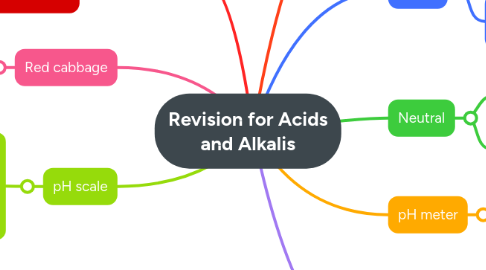Revision for Acids and Alkalis
da Simone Gonsalves

1. Red cabbage
1.1. Red cabbage is only half accurate but works the same way as the Universal indicator. This indicator, though, is completely natural.
2. pH scale
2.1. The pH scale is a sheet of paper numbered from 1 to 14. It also has a list of colours that are pink, red, orange, yellow, green, dark green, blue, purple, and violet.
3. Acid rain
3.1. Acid rain is caused by pollution. This means that gases such as nitrogen and sulfur get released into the atmosphere.
3.1.1. This can cause statues to erode and destroy. Acid rain can also kill wildlife, e.g. fish.
4. Acids
4.1. If the substance is acidic, it has a pH of 1, 2, 3, 4, 5, or 6.
4.2. Some examples are: hydrochloric acid, citric acid, and acid rain.
5. Alkalis
5.1. If the substance is alkaline, it has a pH of 8, 9, 10, 11, 12, 13, or 14.
5.2. Some examples are: toothpaste, washing up liquid, and ammonia.
6. Neutral
6.1. If the substance is neutral, it has a pH of 7.
6.2. On example is: tap water.
7. pH meter
7.1. The pH meter is very accurate and helps with measuring the pH of a substance.
8. Universal indicator
8.1. Universal indicator has to be added to a substance to check if the substance is an acid, alkali, or if it's neutral.
8.2. The colours it shows can be either pink, red, orange, yellow, green, dark green, blue, purple, or violet. To find out what pH it is, you have to use the pH scale.


